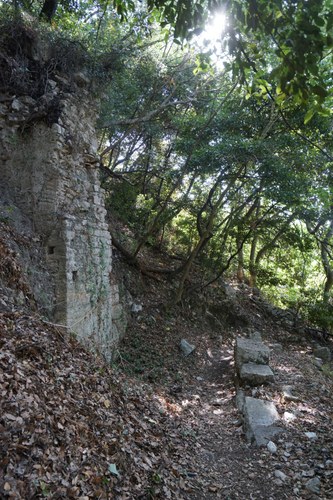North Gate

It was located on the northwest extent of the wall circuit, between the Lion Gate and the West Gate, and was one of the access to the acropolis from the northern bay during Classical and Hellenistic Age. It was excavated by Ugolini, and it seems that this gateway was one of the largest in the city, wide enough to let wheeled vehicles go through.
Its state of conservation is quite scarce: just two rows of its northern side and part of the southern forming the inner façade are still visible, while the outer curtain has almost completely disappeared. The opening is not wide, and the main beams are held up by large shelves, which allow to reconstruct that the door must have had imposing dimension. It is built using rectangular blocks of different dimensions. It seems that the opening faced west, where there was also a threshold with a step.
Bibliography on the subject
-
Hammond N. G. L., Epirus. The geography, the ancient remains, the history and the topography of Epirus and adjacent areas, Oxford, Clarendon Press, 1967, pp. 105-106
- Karaiskaj G., Crowson A. (edt), The fortifications of Butrint, English edition of Butrinti dhe fortifikimet e tij (Tirana 1986), London-Tirana, Butrint Foundation, 2009, p. 42
- Martin S., "The topography of Butrint" in Hodges, Bowden and Lako, Byzantine Butrint: excavations and surveys 1994-99, Oxford, 2004, pp. 76-103
- Ugolini L. M., Butrinto. Il mito di Enea. Gli scavi, Istituto grafico tiberino, 1937, pp. 121-122
- Ugolini L. M., L‘acropoli di Butrinto, Roma, 1942, pp. 65-66